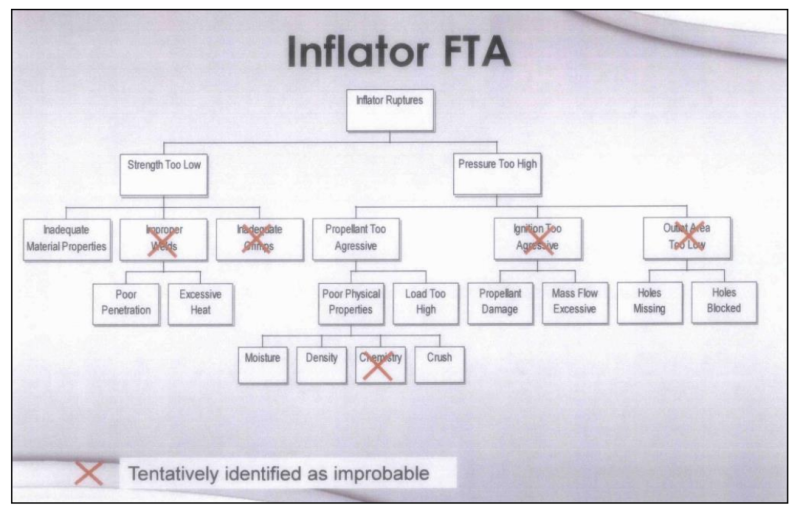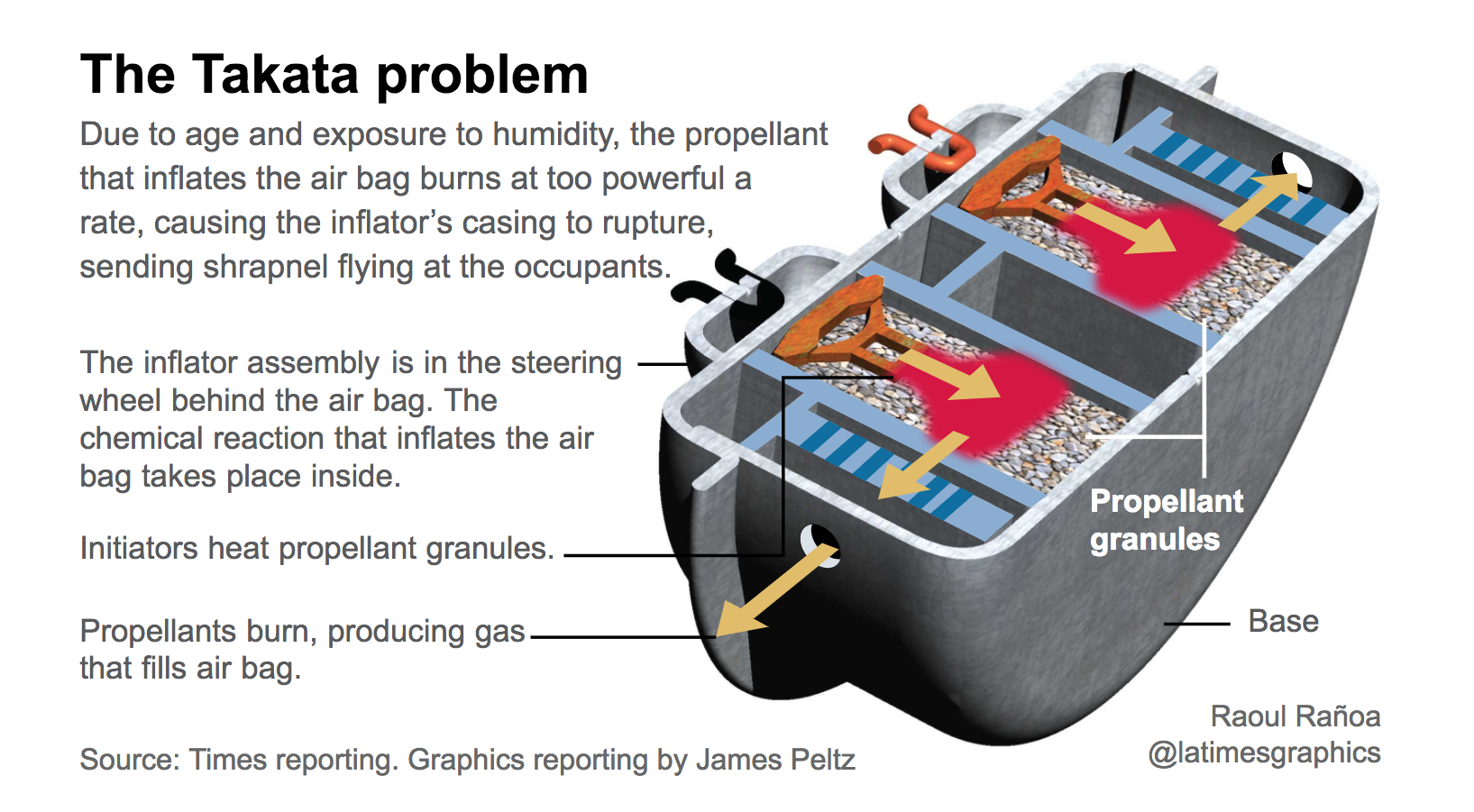The Takata Airbag Problem Statement
Takata Corporation began manufacturing airbags in 1988, initially using sodium azide as the propellant. This was difficult to handle safely, and so in the 1990s, production switched to tetrazole, a safer alternative. However, this came at a high price, so research was undertaken to find an alternative.
Takata made the decision to switch to using ammonium nitrate as a propellant. Prone to breaking down under hot and humid conditions, it can become unstable, leading to airbag modules exploding rather than safely inflating in a crash. In these cases, the airbag igniter case can rupture, spraying metal fragments throughout the vehicle. This can lead to serious injury or even death for occupants of the vehicle.
The properties of ammonium nitrate were well known; other airbag manufacturers had long ruled out its use due to its stability issues. Engineers warned in the late 1990s that the material was unsafe for the application, long before the parts in question were installed in vehicles. In spite of this, Takata forged ahead, winning contracts with major automakers. As the years went on, millions of airbags with ammonium nitrate propellant would be installed in vehicles worldwide, and the timebombs began ticking.

A Fault Tree Analysis document from within Takata shows that the investigation ruled out a fundamental chemistry issue early in the investigation. Source: NHTSA report

